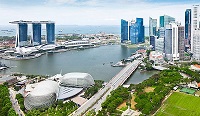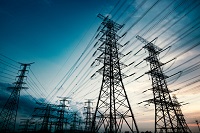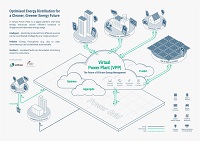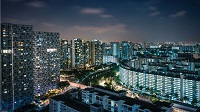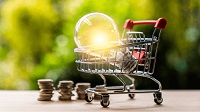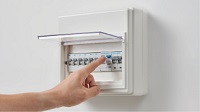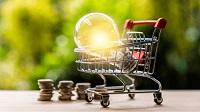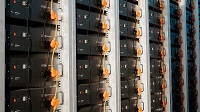To power a net zero future, renewable energy sources are a must. These could be sources like solar power from the sun, geothermal energy from heat deep inside the earth or hydropower from fast-flowing rivers.
While Singapore has limited renewable energy options, we lie in a region with an abundance of such resources. To widen our renewable energy sources, we are looking beyond our shores for low-carbon electricity to power our homes and offices.
But with literally mountains to climb and countries to cross, how could we access the energy sources from overseas?
This is where regional power grids come into the picture. Cutting across borders, regional power grids help facilitate renewable energy projects, promote economic growth, and bring greater energy security to the region.
In this edition of EMA Explores, energy guru EMA Watt-son chatted with Janice Bong, Executive Director at Keppel Infrastructure, to find out more about the first multilateral cross-border electricity trading initiative involving four ASEAN countries including Singapore.
Whoa, I heard Singapore is importing low-carbon electricity via the Lao PDR-Thailand-Malaysia-Singapore Power Integration Project (LTMS-PIP). What is this project all about? Why import electricity? Is there insufficient electricity produced domestically?
Janice: The LTMS-PIP is the first multilateral cross-border electricity trading initiative involving Singapore and three other ASEAN countries. It also marks the first renewable energy import into Singapore as we move towards the national target of 4 gigawatts (GW) of low-carbon electricity imports by 2035. While there is enough electricity produced locally, it is important to diversify Singapore’s energy sources and improve our energy resilience.
Keppel is therefore happy to be part of this project. As Singapore’s first electricity importer licensee, we have signed a two-year power purchase agreement with Electricite du Laos to import up to a capacity of 100 megawatts (MW) of low-carbon electricity from Lao PDR into Singapore.
These efforts are also part of the company’s commitment to delivering reliable, innovative, and economically sustainable energy to serve the needs of communities.
So, what is low-carbon electricity? And why the move to import from Lao PDR?
Janice: Low-carbon electricity is generated by cleaner sources that produce little or no carbon emissions, such as wind, hydro or solar power.
Lao PDR is a major exporter of renewable energy in the Southeast Asia region. It has exported over 6,000 MW of cross-border electricity to its neighbouring countries, including Cambodia, Myanmar, Thailand, and Vietnam. Thus, we saw a great opportunity in participating in the LTMS-PIP by working with like-minded partners such as Electricite du Laos. Through this project, Keppel helps to support not only Singapore on its 2050 net zero climate target, but also our customers in their decarbonisation journeys.
With countries in between Lao PDR and Singapore, how does low-carbon electricity make its way here?
Janice: Thanks to the coordinated efforts of the governments and grid operators in Lao PDR, Thailand, Malaysia, and Singapore, we are able to make this project a reality. First, renewable electricity generated by hydropower dams in Lao PDR is transmitted directly to its electricity network. Next, the hydropower-generated electricity from Lao PDR is transferred to Thailand and subsequently Malaysia via existing interconnectors before being finally delivered to Singapore.
With the LTMS-PIP, Keppel aims to import up to 100 megawatts (MW) of low-carbon electricity. So what do you do with the electricity that is imported?
Janice: We transmit the imported electricity directly to Singapore’s power grid. As the imported electricity comes from renewable hydropower, it will help to decarbonise Singapore’s overall power sector. This means it will reduce the amount of carbon emissions with every unit of electricity generated in our city.
The import of low-carbon electricity has been important into Singapore since June 2022. So far so good?
Janice: The importation of electricity from Lao PDR since June 2022 has been smooth. This is due to the detailed planning as well as constant and open communication between all 4 countries’ stakeholders which facilitated a good start to the project. The LTMS-PIP is a significant pathfinder towards realising the broader ASEAN Power Grid (APG) vision of multilateral electricity trading. In the near future, Keppel will explore more and larger opportunities on this front as well as other opportunities in the renewable energy sector.
I’m sure every Singaporean is keen to know this. Will consumers have to pay more for renewable energy?
Janice: Renewable energy plays a critical role in Singapore’s journey towards a more sustainable future. As both the first electricity importer licensee and the first homegrown electricity retailer, Keppel is well positioned to provide competitive renewable energy solutions to our consumers for achieving their net zero goals.
Finally, what are Keppel’s aspirations and how will Keppel continue to contribute to Singapore’s efforts in decarbonising the power sector?
Janice: Besides our participation in the LTMS-PIP, we are developing Singapore’s first hydrogen-ready 600 MW advanced Combined Cycle Gas Turbine (CCGT). Also known as the Keppel Sakra Cogen Plant, it will help to further decarbonise Singapore’s power sector. The power plant is expected to be completed in 2026. It will be the most efficient CCGT in Singapore and will help save up to 220,000 tons of CO2 per year—equivalent to taking 47,000 cars off the road every year.
Recently, we also unveiled Singapore’s first Green Mark Platinum Positive Energy building – Keppel Infrastructure @ Changi. With over 4,000 square metres of solar panels covering the building façade, it will yield about 600,000 kWh of renewable energy annually, more than double of the building’s consumption. The reduction in carbon emissions is equivalent to the planting of 7,000 trees.
In line with our Vision 2030, we will continue to strive to provide sustainable energy and urbanisation solutions for the ASEAN region and beyond.
Know more ways to help Singapore reduce its carbon footprint? Share your suggestions with us! Let’s do more to help our city achieve its net zero goal by 2050.
